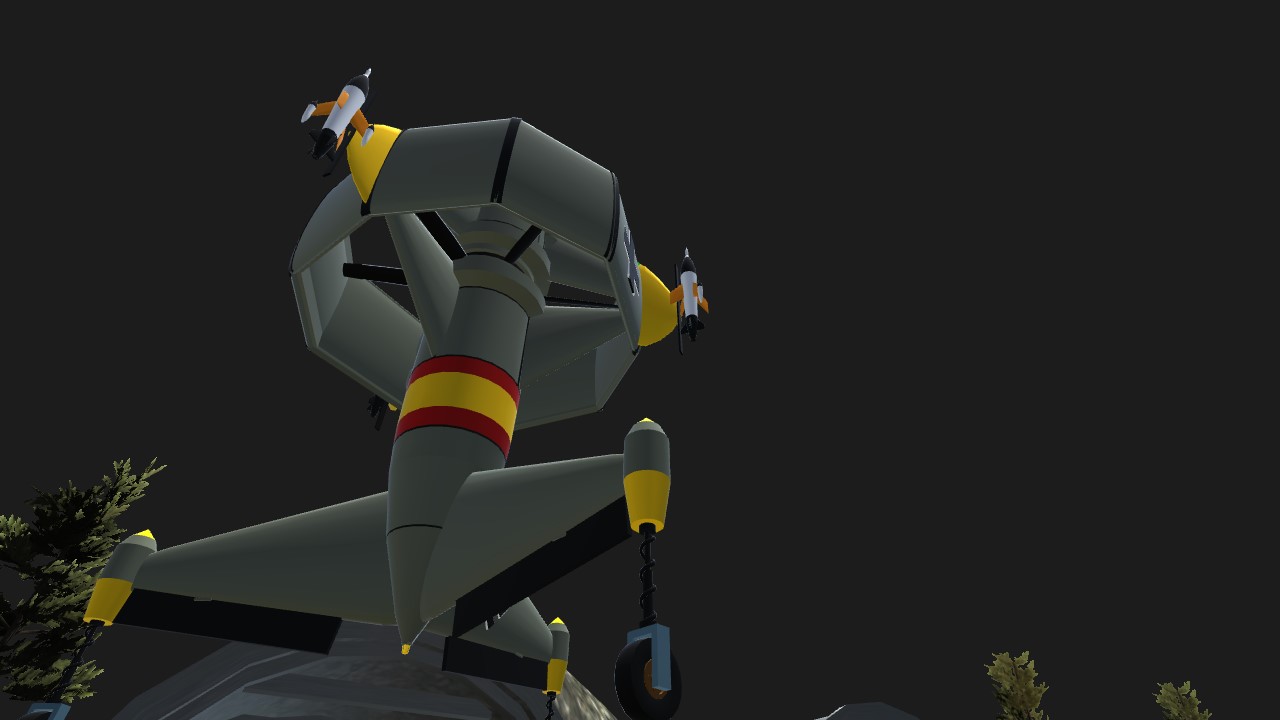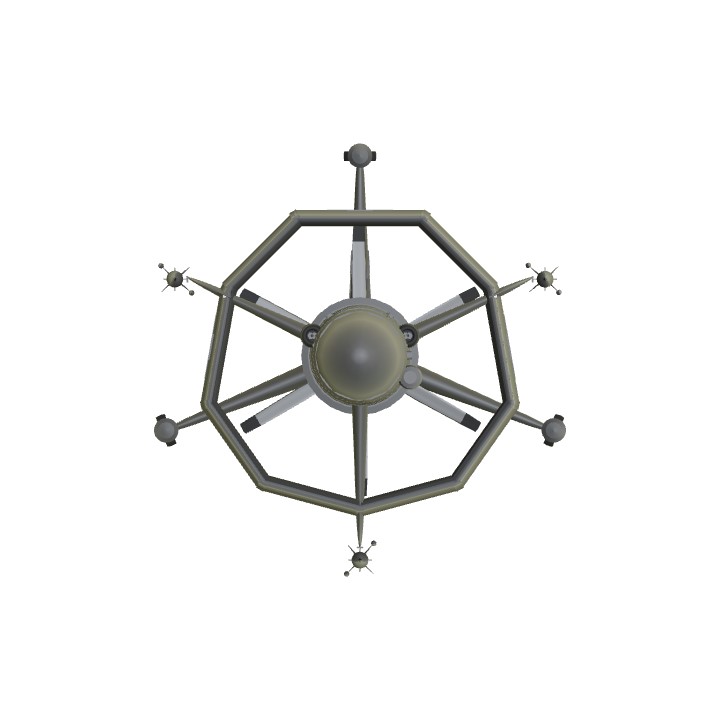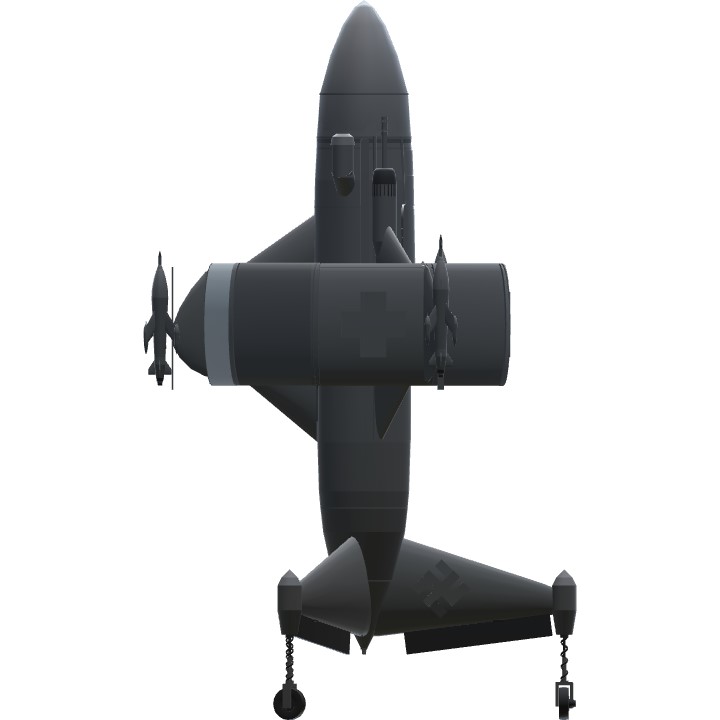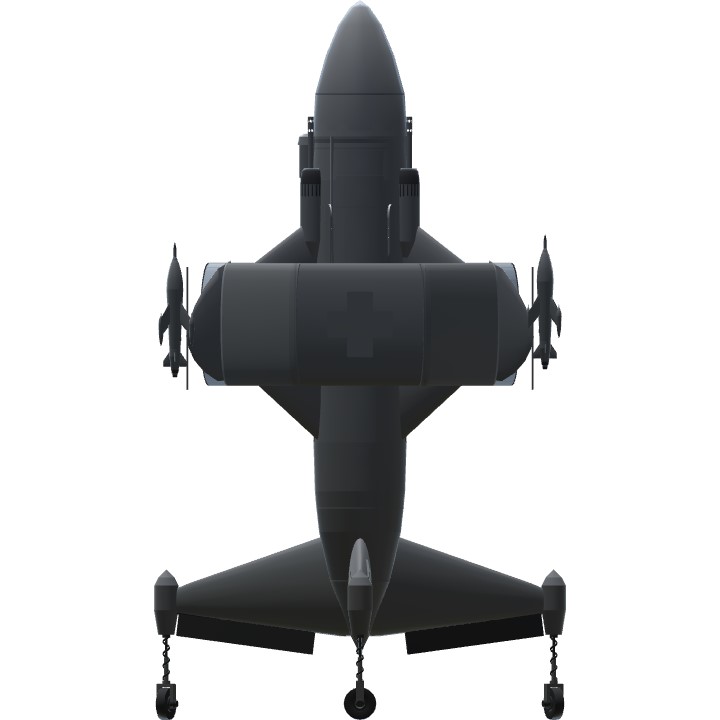Activation group (1) - Turn on the gyro (FOR LANDING)
Activation group (7) - signal lights.
Activation group (2) - Steering wheel (Not recommended)
----------------------------------------------------------------------------------------
The Heinkel Lerche (English: Lark) was the name of a set of project studies made by German aircraft designer Heinkel in 1944 and 1945 for a revolutionary VTOL fighter and ground-attack aircraft.
The Lerche was an early coleopter design. It would take off and land sitting on its tail, flying horizontally like a conventional aircraft. The pilot would lie prone in the nose. Most remarkably, it would be powered by two contra-rotating propellers which were contained in a donut-shaped, nine-sided annular wing.
The remarkably futuristic design was developed starting 1944 and concluding in March 1945. The aerodynamic principles of an annular wing were basically sound, but the proposal was faced with a whole host of unsolved manufacture and control problems which would have made the project highly impractical, even without the materials shortages of late-war Nazi Germany.
Specifications
General Characteristics
- Successors 1 airplane(s)
- Created On Windows
- Wingspan 21.0ft (6.4m)
- Length 21.7ft (6.6m)
- Height 36.1ft (11.0m)
- Empty Weight 9,289lbs (4,213kg)
- Loaded Weight 13,911lbs (6,309kg)
Performance
- Horse Power/Weight Ratio 0.862
- Wing Loading 29.8lbs/ft2 (145.5kg/m2)
- Wing Area 466.9ft2 (43.4m2)
- Drag Points 23519
Parts
- Number of Parts 318
- Control Surfaces 6
- Performance Cost 1,045







Whoa.